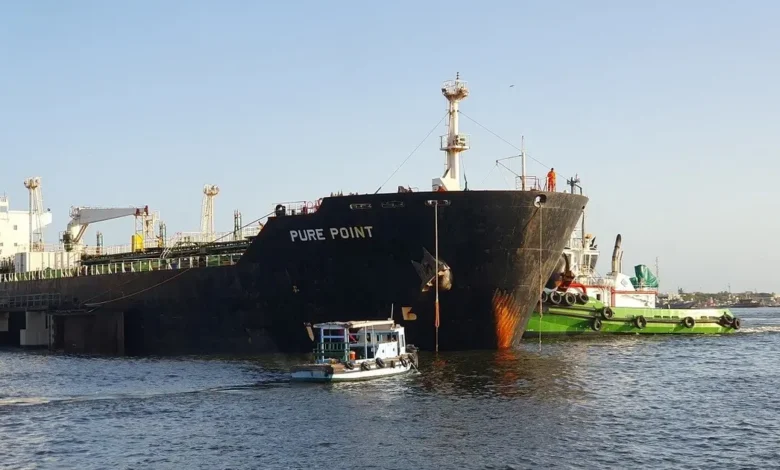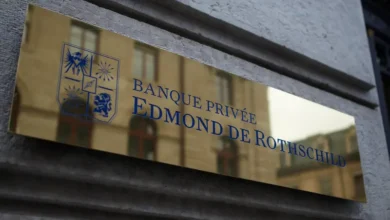Low-profile traders help ship half Russia’s oil exports to India, China

A Liberian-flagged oil tanker set sail in May from Russia’s Ust-Luga port carrying crude on behalf of a little-known trading company based in Hong Kong. Before the ship had even reached its destination in India, the cargo changed hands.
The new owner of the 100,000 tonnes of Urals crude carried on the Leopard I was a similarly low-profile outfit, Guron Trading, al-so based in Hong Kong, according two trading sources.
The number of little-known trading firms relied on by Moscow to export large volumes of crude exports to Asia has mushroomed in recent months, since sanctions over the Ukraine war led major oil firms and commodity houses to withdraw from business with producers in Russia, reporting by Reuters has found.
At least 40 middlemen, including companies with no prior record of involvement in the business, handled Russian oil trading between March and June, according to a Reuters tally after speaking to 10 trading sources along with analysts from think-tank Kpler and analyzing data from Refinitiv and the non-public books of shipping companies.
The new players have shipped at least half of Russia’s overall crude and refined products exports of 6-8 million barrels per day (bpd) on average this year, turning the little-known companies collectively into some of the world’s largest oil traders, according to Reuters calculations based on private information from the 10 trading sources and Eikon data.
The companies began appearing after Russia’s February 2022 invasion of Ukraine, which Moscow calls a special military operation, with as many as 30 middlemen involved in trades over the course of last year, according to the tally.
The network marks a major departure from the handful of well-established oil majors such as BP and Shell and top trading houses including Vitol, Glencore, Trafigura, and Gunvor that handled Russian crude and oil products for decades.
There is no suggestion the trades break sanctions, although they may make it difficult for sanctions enforcement agencies in Europe and the United States to track Russian oil transactions and prices.
Earlier this month, Urals prices jumped above a price cap of $60 a barrel on Russian exports imposed by the Group of Seven na-tions, Australia and the European Union from December 5 that was intended to punish firms involved in any trade above that level.
When prices are above the cap, the rapidly changing trading network could make it hard to identify those involved in moving the oil, five traders involved in handling Russian oil said.
The reporting shows that in May, Russia, one of the world’s top three oil producers, supplied record volumes to China and India, which have not imposed sanctions on Moscow and became its leading buyers after sanctions by Europe, the United States and other powers limited their own purchases.
Neither Guron Trading or Bellatrix Energy, the company that origi-nally chartered the Leopard I and bought the cargo from Russian oil company Rosneft, responded to requests for comment. Rosneft did not respond to questions.
The websites for Guron Trading and Bellatrix Energy appeared to have been taken down recently. Both were online prior to the companies being contacted by Reuters.
Trading at sea
Along with the emergence of the new companies, once rare multiple trades while ships are at sea have become widespread, the five sources involved in Russian oil trading said. The sources described at least 10 such trades, which happen with little public documentation and aim to make Russia’s oil exports more difficult to track, they said.
One buyer of Russian oil likened the rise and fall of the new trad-ers to the brief careers of TikTok stars, while another trader de-scribed a “kaleidoscope” of new players. In some cases, a single cargo will pass through at least three traders, the oil buyer said.
Under the previous system, oil cargoes were generally handled by one well-known trader from source to destination.
Reuters could not establish the ultimate owners of the new trading companies.
The growing network of pop-up traders overlaps with a booming market for old oil tankers supplied by new companies to carry Russian oil that Western shippers are avoiding.
The new trading network and practices raise financial risks for Russian oil companies dealing with unknown entities with limited credit history.
Some of the companies that emerged as major traders of Russian oil last year, such as Coral Energy and Everest Energy, have since exited the business.
Responding to questions from Reuters, both denied they left the trade because of sanctions risks. Everest said “it was a strategic business decision based on various factors specific to our company.” Coral said “we made a decision to source outside of Russia thanks to the diversified footprint in MENA region.”
The US Treasury department’s sanctions enforcement agency, OFAC, and its EU and UK counterparts did not respond to requests for comment for this story.
In July, a US Treasury official said sanctions were designed to keep Russian oil in the market, dampening prices for consumers while limiting oil revenues Moscow uses to finance the war in Ukraine.
“We recognize that (sanctions on Russia are) going to change the shape and structure of the Russian oil markets,” the official told reporters.
The official also said Washington was unconcerned that sanctions were resulting in more trades in currencies other than the dollar — after a rise in the use of yuan and UAE dirham to settle Russian oil transactions as Moscow finds itself shut out from international banks.
Multi-year export high
Owned and operated by the Dubai-based Leopard I Shipping, the Leopard I arrived at Visakhapatnam port on June 15, where Indian refiner Hindustan Petroleum took delivery of the cargo from Guron Trading, data from the two trading sources showed.
Hindustan Petroleum didn’t immediately respond to a request for comment.
The emerging companies have played a key role in keeping Rus-sia’s oil exports moving, and even growing, as its leading crude producers Rosneft, Lukoil, Surgutneftegaz, and Gazprom Neft diverted shipments to India and China.
Helped by this network, Russian oil exports from all sea ports reached a multi-year high in April and May at nearly 4 million bpd, according to Reuters calculations based on polling of 10 traders as well as Russian port loading programs and Refinitiv data.
In May, Russian seaborne oil supplies to India, which was a rare buyer of Russian oil before the war, reached a record of 1.95 million bpd while China imported 2.29 million bpd.
Only Lukoil continues to market oil through its trading division — Litasco — which it relocated to Dubai from Geneva.
The other companies sell to the new trading firms, which are mostly registered in China, Singapore, Hong Kong, or Dubai, according to the five sources and local public company registers.
Media representatives for Rosneft, Surgutneftegaz and Gazprom Neft didn’t answer Reuters requests for comment.
Payment delays
The strategy brings risk for Russian producers. Venezuela, which uses a similar system to move oil, has suffered payment problems, fraud, and losses.
While there have been no reports to date of non-payment, delays have caused some problems, the five traders involved in the Russian oil business said.
Russian exporters waited between three to five months to get paid after their cargoes sailed, the sources said. Normally, buyers pay for the cargoes about a month after the ship sails, they said.
One source said such delays created a fiscal gap for exporters who were having to pay taxes to the Russian state before even being paid for their oil.
A source with one major Russian oil company said his company was prepared to deal with higher credit risks from buyers for the sake of having stable and rising oil exports.
“Last year, we were facing output cuts as marketing was bad. Now it’s alright — we have buyers, we have sales,” the source said.










